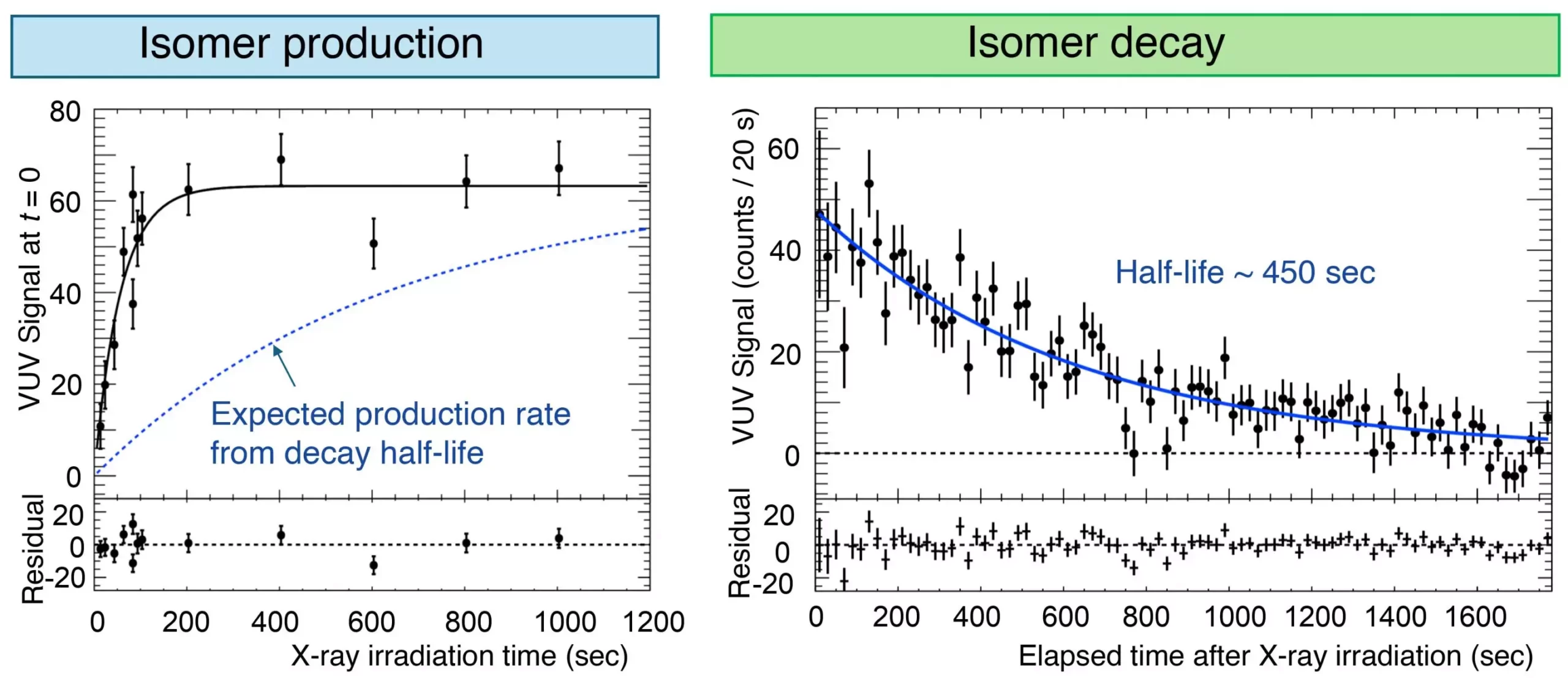Time, in its essence, is one of the most fundamental aspects of our existence. The precision with which we measure time has evolved significantly over centuries, transitioning from rudimentary sundials and mechanical clocks to sophisticated atomic clocks. Victoriously precise to the nanosecond, atomic clocks utilize the oscillation of electrons within atoms as a universal standard for measuring seconds. However, as humanity’s pursuits for accuracy broaden, so too does the need for enhanced timekeeping mechanisms. Enter nuclear clocks—a groundbreaking development that promises to redefine precision in time measurement.
Unlike traditional atomic clocks that rely on electron transitions, nuclear clocks harness the intricate transitions occurring in atomic nuclei. One of the most promising candidates for this next-generation technology is the isotope 229Th, specifically its nuclear first-excited state. With a remarkable half-life of 103 seconds and excitation energy lower than comparable atoms, 229Th presents unique advantages. A pivotal factor is its compatibility with vacuum ultraviolet (VUV) lasers, which can precisely excite this nucleus, making it a prime candidate for the ultra-precision we seek in nuclear timekeeping.
The potential applications of nuclear clocks stretch far beyond merely keeping accurate time. Their high precision can significantly impact various fields, including navigation technology, fundamental physics research, and even portable devices used for gravity sensing. Enhanced GPS systems that leverage nuclear clocks could transform positioning accuracy, while enabling rigorous experimental tests of physical laws through constant monitoring.
A recent study from a dedicated team at Okayama University, led by Assistant Professor Takahiro Hiraki, marks a significant leap forward in understanding the 229Th isomer. This pioneering research team, including notable scientists Akihiro Yoshimi and Koji Yoshimura, aimed to meticulously investigate the characteristics of 229Th needed to propel nuclear clock technology. Their findings, published in Nature Communications in July 2024, exemplify how innovative experimental setups can unlock the secrets of isomer population dynamics and radiative decay.
Hiraki’s research involved synthesizing 229Th-doped VUV transparent CaF2 crystals. This allowed the team to manipulate the 229Th isomeric state population effectively by using X-rays. Hiraki articulated the goal of his research succinctly: “To realize a solid-state nuclear clock using 229Th, it is necessary to control the excitation and de-excitation state of the nucleus.” Their efforts indeed brought them closer to achieving this aim, with promising results indicating that controlled transitions can yield significant advancements in nuclear clock technology.
To analyze the radiative decay of excited states, Hiraki and his team employed resonant X-ray beams to induce excitation from 229Th’s ground state to its isomeric excited state. Their experimentation revealed a critical finding: subjected to the X-ray beam, the 229Th isotope underwent rapid radiative decay back to its ground state, resulting in the emission of VUV photons. This observation led to the discovery of an intriguing phenomenon dubbed “X-ray quenching,” wherein the isomer’s population could effectively be decreased on demand—a breakthrough for nuclear clock mechanics.
The implications of this quenching effect are immense, not only for the development of accurate timekeeping devices but also for their potential utilization in real-world applications, such as high-precision measurements in fundamental physics and even distant planetary explorations. Hiraki stated, “When the nuclear clock under development is completed, it will enable us to test whether physical constants, especially fine structure constants, might vary over time,” hinting at the profound impacts this technology holds for the broader scientific community.
As research into nuclear clocks progresses, the objectives set by Hiraki and his team may set the standard for future investigations. Embracing the intersection of nuclear physics, materials science, and advanced optical methods could potentially revolutionize our understanding of time itself. If successful, nuclear clocks will not only provide unparalleled precision in time measurement but may also shed light on fundamental questions of physics, showcasing how innovation in one area of science can yield insights across multiple disciplines.
In a world where precision plays a pivotal role in technology and science, nuclear clocks stand on the brink of making their mark, allowing mankind to measure time with an exquisiteness hitherto unattainable. The race for the ultimate timekeeper is not only a quest for accuracy but also a journey into the very heart of physical wonders.

